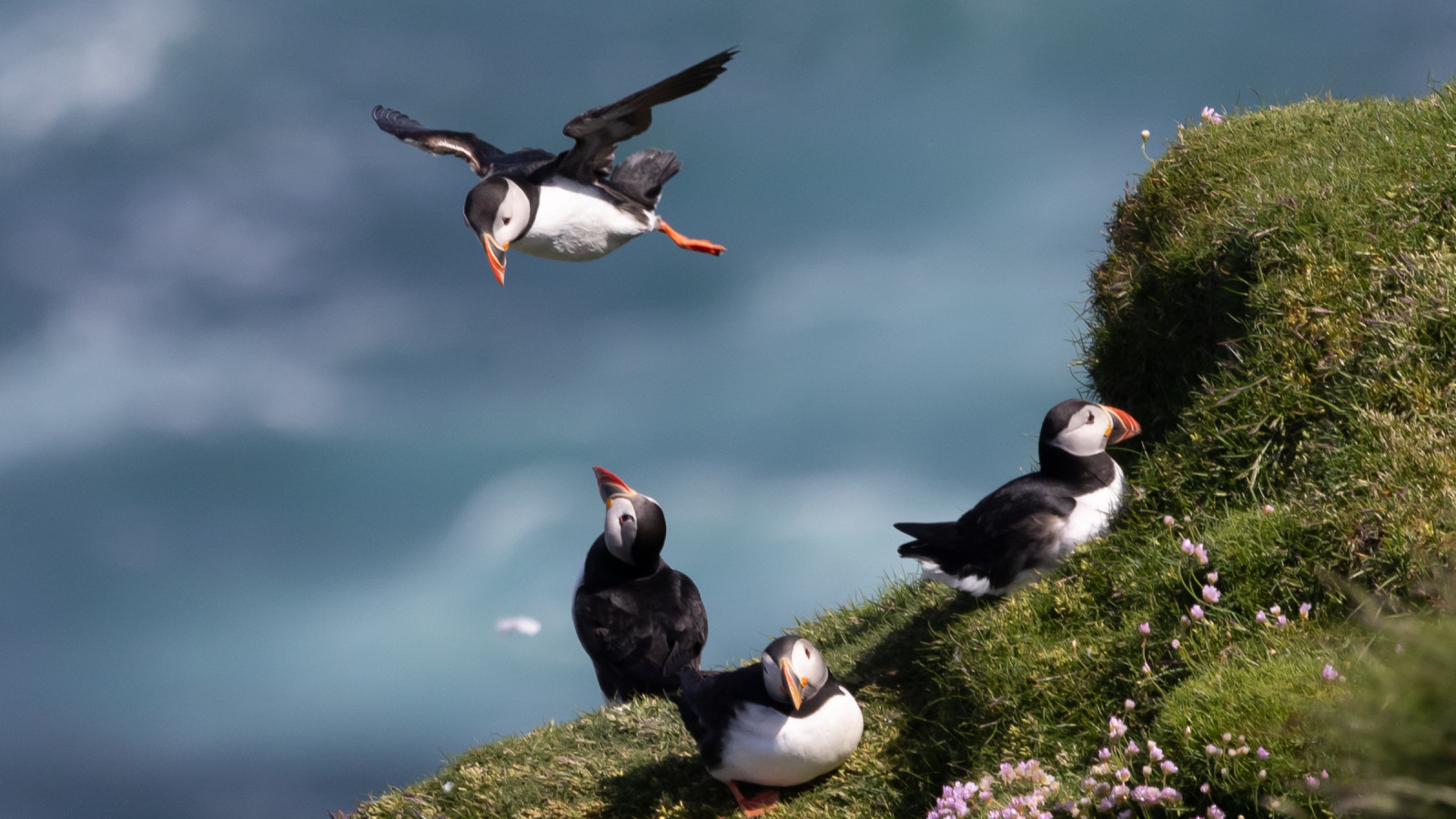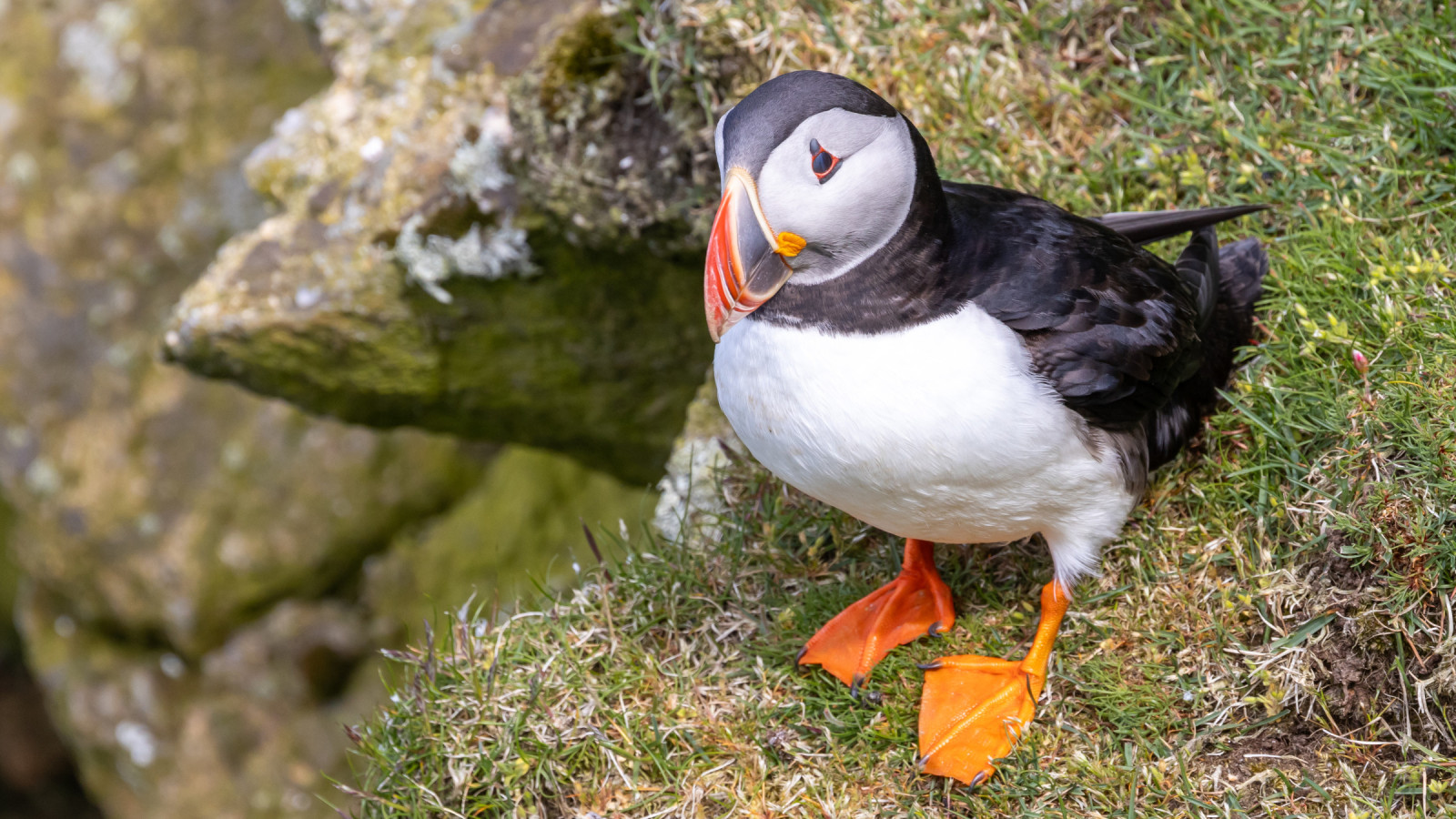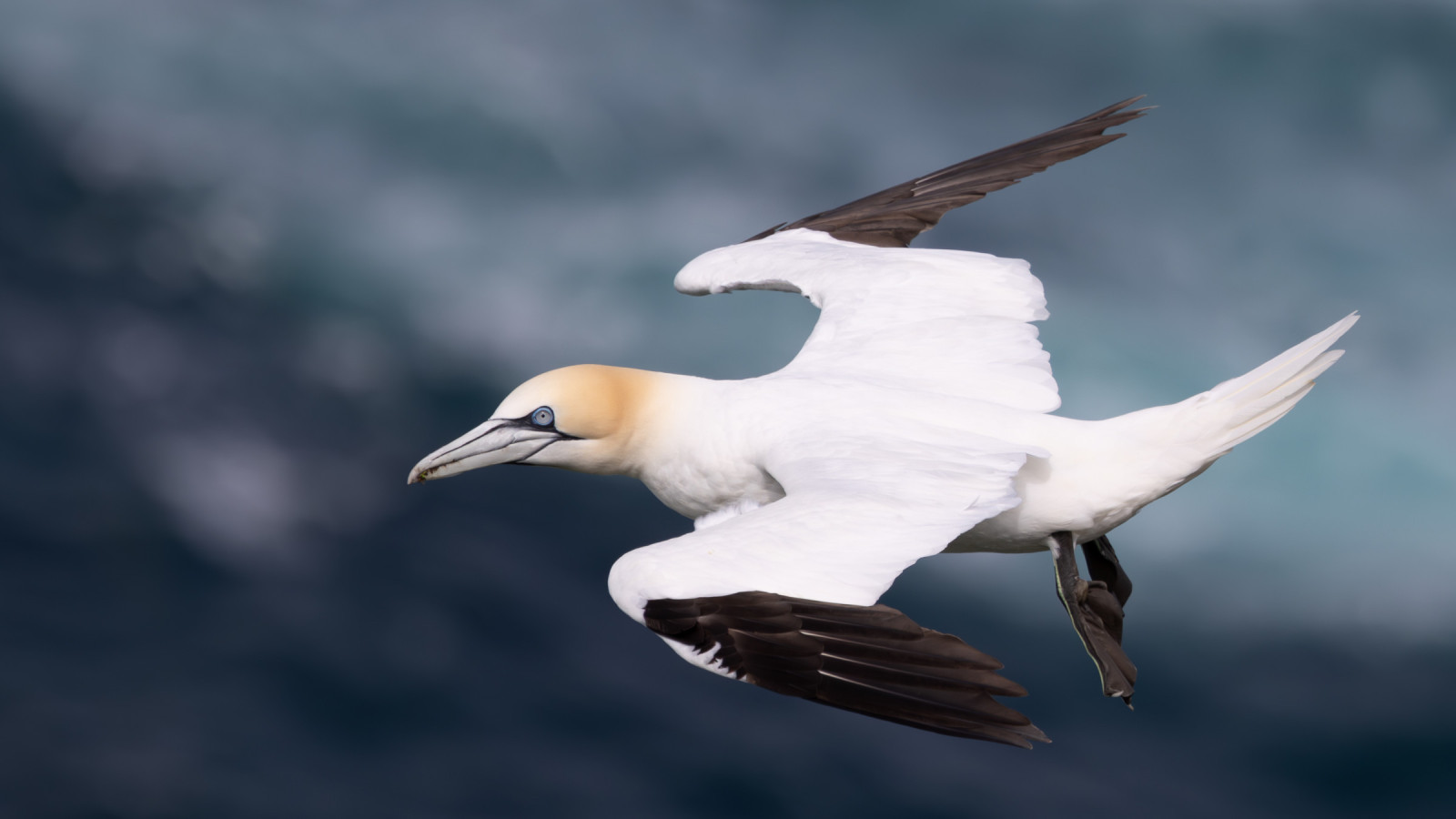Beschreibung
Clifftop with a nice boardwalk. It takes about 40 minutes to walk from the parking place to the clifftop. You can walk along the cliff. There are thousands of Basstölpel. Also lots of Papageitaucher, skuas, Eissturmvogel, Dreizehenmöwe, Krähenscharbe, gulls, Alpenstrandläufer, Steinschmätzer, pipits and so on.
Details
Zugang
There's a parking place near Burrafirth. It's well signed. From the parking place follow the footpath all the way to the cliff. It takes about 40 minutes to walk. It's a bit hilly. When you get to the cliff edge, walk to the left to see a huge Basstölpel colony up close. You can walk all the way round. If you go to the right, you can see Muckle Flugga, Britain's most northerly lighthouse. The cliff edge is not fenced, so be careful, especially with strong winds. Also, be careful where you step, as there are quite a few Papageitaucher burrows along the edge. Be aware of dive bombing Skua (called bonxies in Shetland) in breeding season. Best to stick to the path. Part of the area is closed in breeding season to protect Sterntaucher.
You can hike off trail, but it's not recommended as it is very wet with many hidden pools and in breeding season there are lots of breeding birds you will disturb. Circular trail only open out of breeding season.





